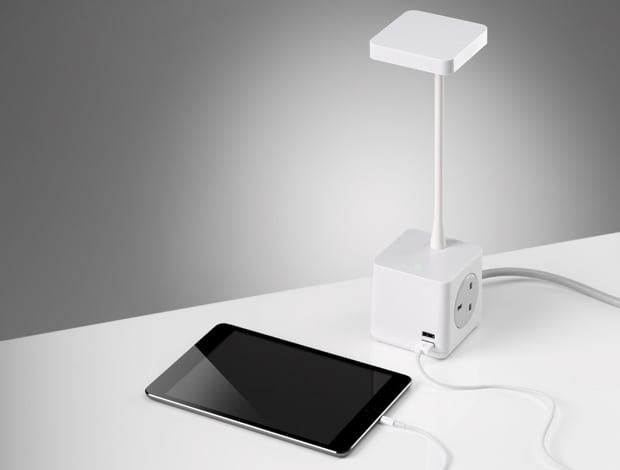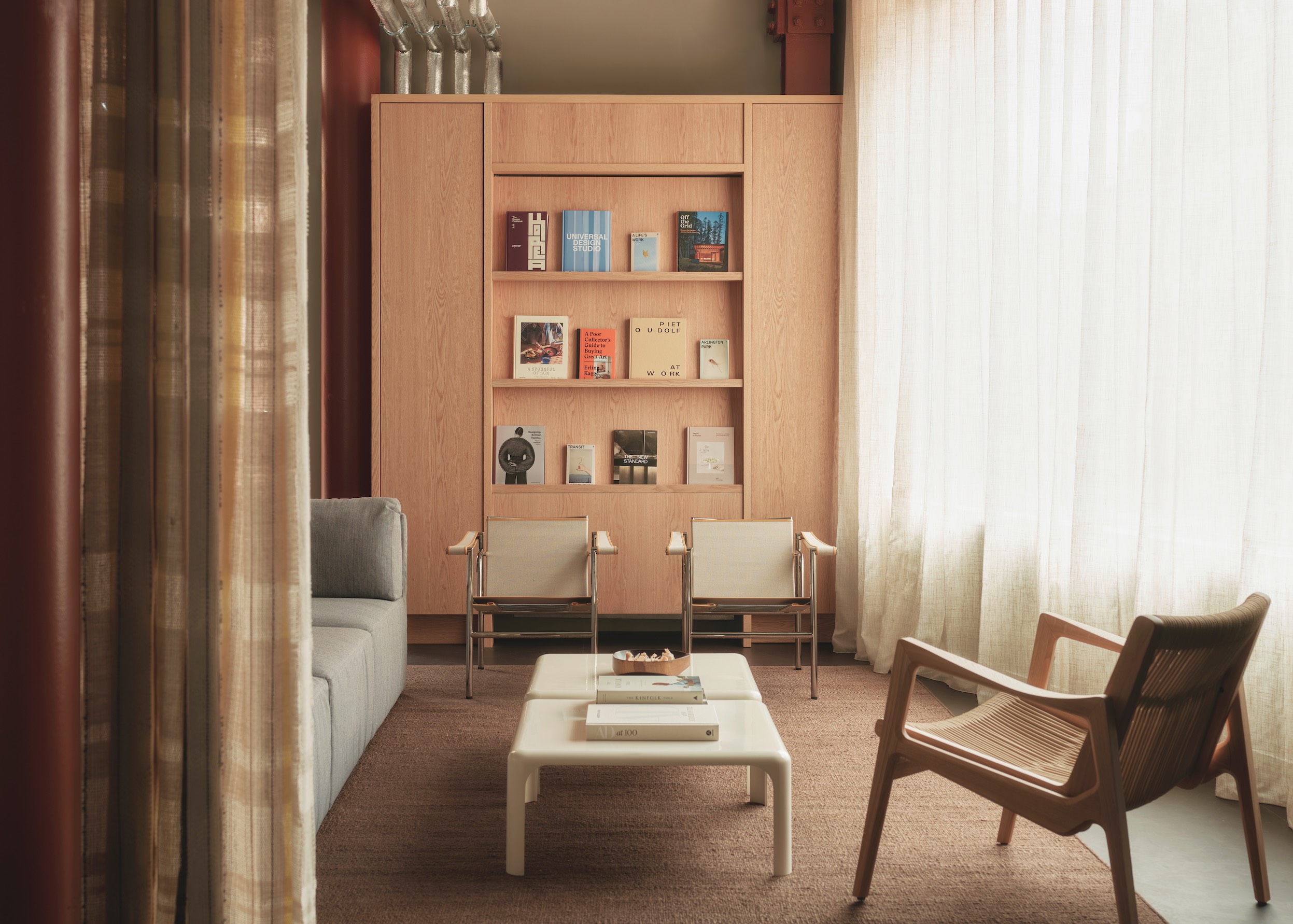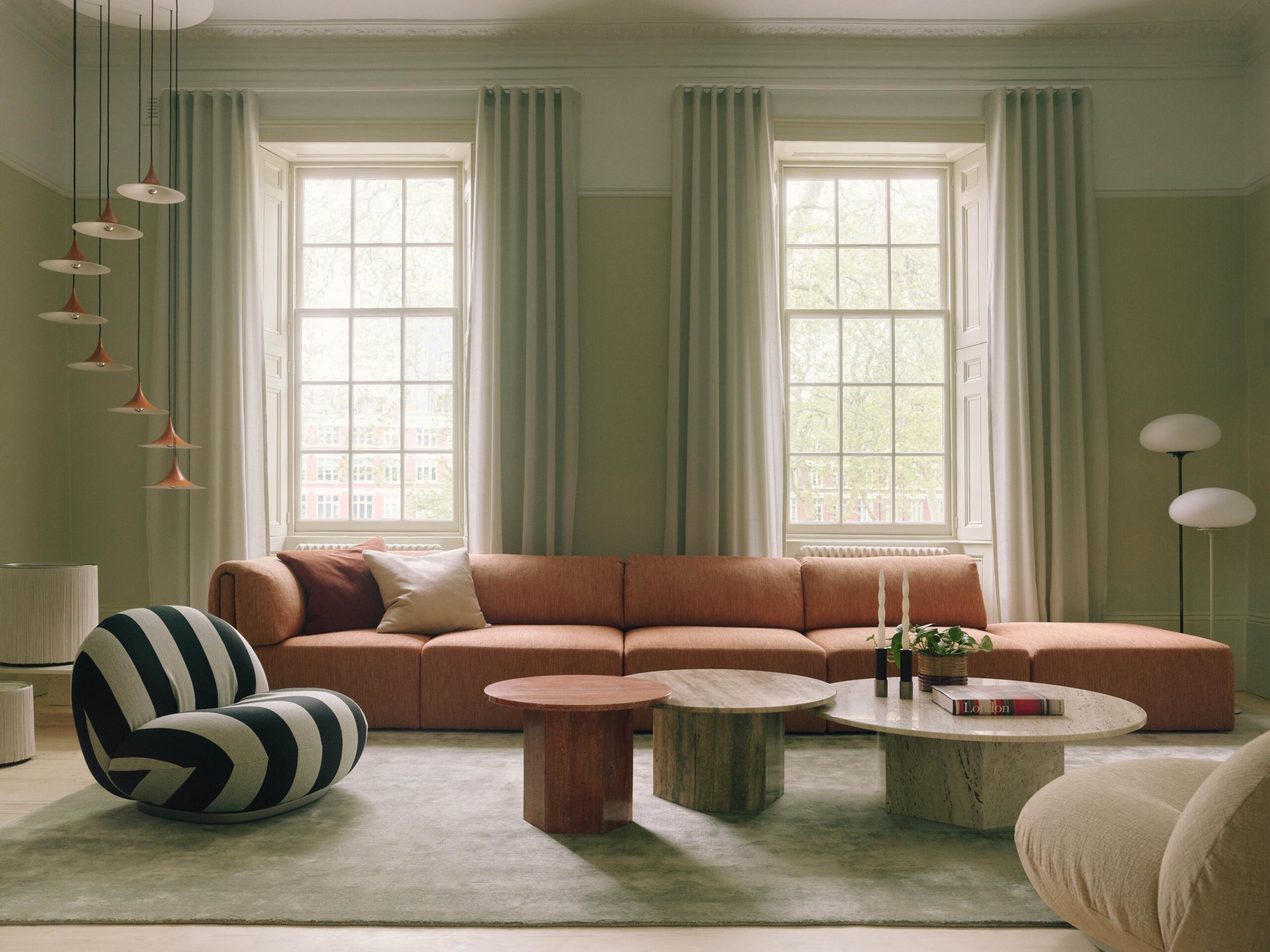 The base features two mains sockets and two USB ports||
The base features two mains sockets and two USB ports||
Colebrook Bosson Saunders – known for highly intelligent technology-supporting products such as monitor arms – launches a light that’s also a charger
Sometimes I think it’s important to pin your colours to the mast: I’ve long believed that Colebrook Bosson Saunders is one of the more impressive product manufactures in the UK. It isn’t loud, flash or brash. It doesn’t employ fashionable design names in the hope of making an instant, but shallow, splash across the media. It simply goes about its business of making quietly effective (and occasionally properly revolutionary) products that combine engineering know-how with subtle design.
In a three-minute film on the firm’s website recounting the company’s history, the standout line comes from founding partner Peter Bosson, who says succinctly about the work CBS produces:
“What it is comes out of what it does,” echoing, of course, Louis Sullivan’s opinion that “form ever follows function,” although allowing for the fact that many of today’s products are by their nature multi-functional.
And so it is with Cubert, a new desk light that is the firm’s first foray into areas that until now might have been thought of as distinct – lighting and power-charging.
I’ve written on these pages in the past about my love of a cantilevered task light (think Carwardine’s classic Anglepoise or, a personal favourite, the Berenice, manufactured by LucePlan) and the manner in which they create a pool of light that envelops you and your keyboard rather than a shaft that floodlights your desk.
Regular readers of this column will also be aware of my suspicion of the cold, harsh hue produced by LEDs. However, despite my reservations, Cubert’s modest, retiring design possesses more than a dash of charm – in fact there is something strangely zoomorphic about it.
For a start it’s dinky, standing at 300mm high and making sure that it doesn’t take up too much precious desk space. Light can be directed by tilting the head (up to 35 degrees) and rotating the shaft. The product is turned on by tapping the top of its cube-shaped based and can be progressively dimmed for a more ambient feel until the light is completely extinguished with the fourth touch.
It’s nicely finished too. The base and shade are moulded from a blend of polycarbonate and ABS – a polymer that the company assures me is extremely durable. Meanwhile, the stem is a cold-drawn steel tube with die-cast zinc for the tilt-and-rotate fittings.
Undoubtedly though, the feature that really sets it apart are the pair of mains sockets and the two USB ports embedded in the base, which allow users to plug in their laptops and phones to charge. Apparently the USBs are ‘smart’, meaning they will recognise your principal device – or in other words, if both ports are in use, then the device plugged in first is given primary charging provision.
“We chose to offer this higher current to the first connected device – regardless of which socket it is plugged into – rather than graphically identify a dedicated fast-charge socket,” the company explained to me over email, when I queried why this smart system was required. “It was felt this would be an easier, more elegant system and more in-keeping with the clean, uncluttered aesthetic of Cubert.”
Launched at this year’s Stockholm Furniture Fair in February, when it arrives on the UK market it should cost £249, which may make a few potential consumers balk – although it’s worth pointing out that the Barber & Osgerby-designed Tab table lamp manufactured by Flos will set you back a comparable £225 from John Lewis, as will a high-end Anglepoise. And there’s no denying that Cubert is a clever, genuinely useful idea that has been extremely well executed.




















